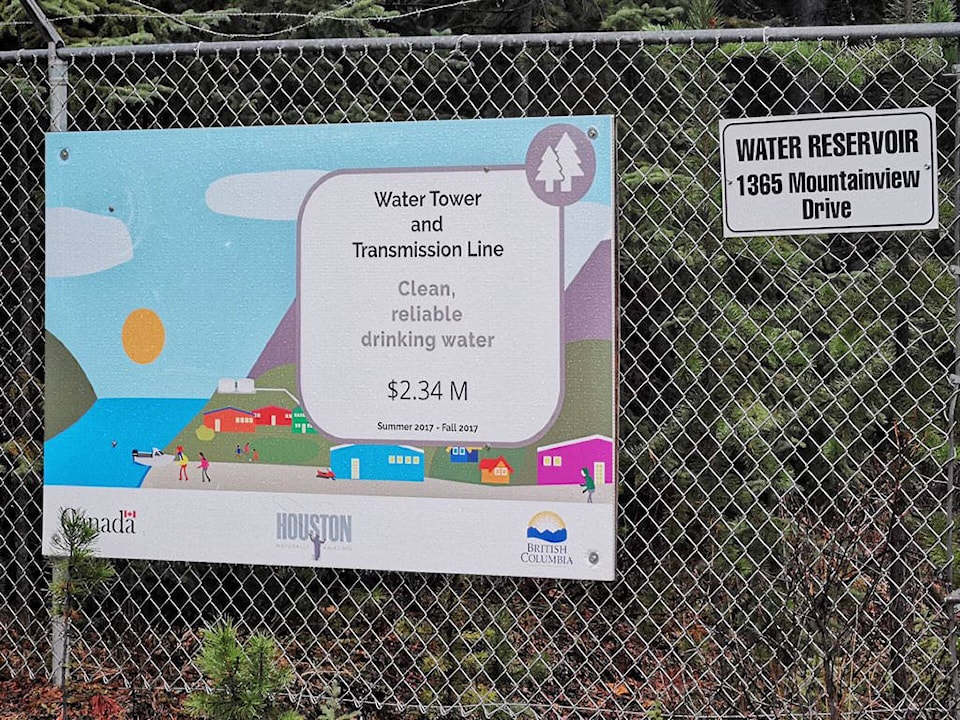The District of Houston is going to find out how much it might cost to either rehabilitate or replace its oldest water reservoir or whether it can meet current needs by doing away with it altogether.
Dismantling Reservoir No. 1, a structure that’s deteriorating, could cost as little as $200,000 but the cost of rehabilitating or replacing it could approach $3 million, a study commissioned by the District has determined.
And doing away with Reservoir No. 1 would leave the District with half of the current capacity, something that would limit its ability to provide water during emergencies.
“The roof is deteriorating, and pieces of concrete are falling off,” wrote District operations manager Chris Lawrence about Reservoir No. 1 in a detailed briefing memo to the District of Houston council which was reviewed at its May 19th regular meeting.
The circular concrete structure is partially buried and has a concrete dome roof, much different then Reservoir No. 2 which is an above ground, circular steel tank with a dome roof that was completed in 2017 at a cost of $2.34 million thanks to the substantial financial participation of the federal and provincial governments.
“To determine the amount of storage the District needs depends upon the level of service it wants to provide,” noted Lawrence.
Typically, the District has three water scenarios — normal daily needs, enough to supply fire-fighting and enough storage in case of another emergency.
Removing Reservoir No. 1 would cut the District’s current capacity in half, leaving the District with less than half a day of emergency water use.
Even with the current capacity, Lawrence noted, “in some locations (shopping centre) there are inadequate fire flows due to infrastructure sizing and fire truck pumping capacity which cannot be addressed solely through additional storage capacity.”
While removing Reservoir No. 1 could cost $200,000, replacing it could approach $2.984 million and a rehabilitation could cost $2.694 million, indicated a current review study.
Lawrence did warn that a complete Reservoir No. 1 rehabilitation cost could only be determined following a complete structural assessment.
“There is uncertainty of the possibility of removing the roof,” he wrote.
However a final determination is reached, capital costs for any project are not included in the District’s current five-year financial plan which lays out projects needed to safeguard the District’s buildings and services assets.
The last large District project regarding water was the 2015 completion of its water treatment plant at a cost of $3.13 million.
